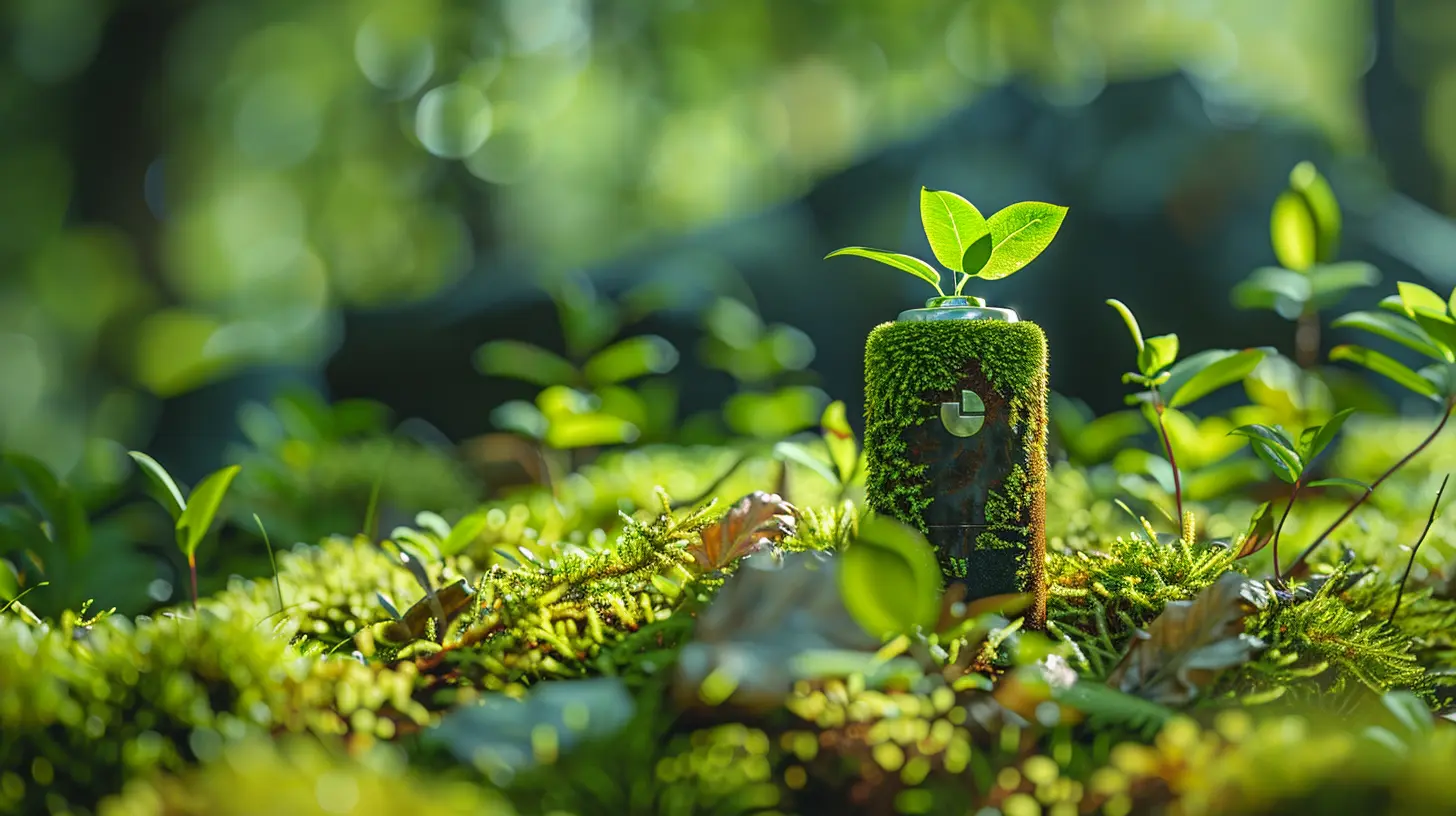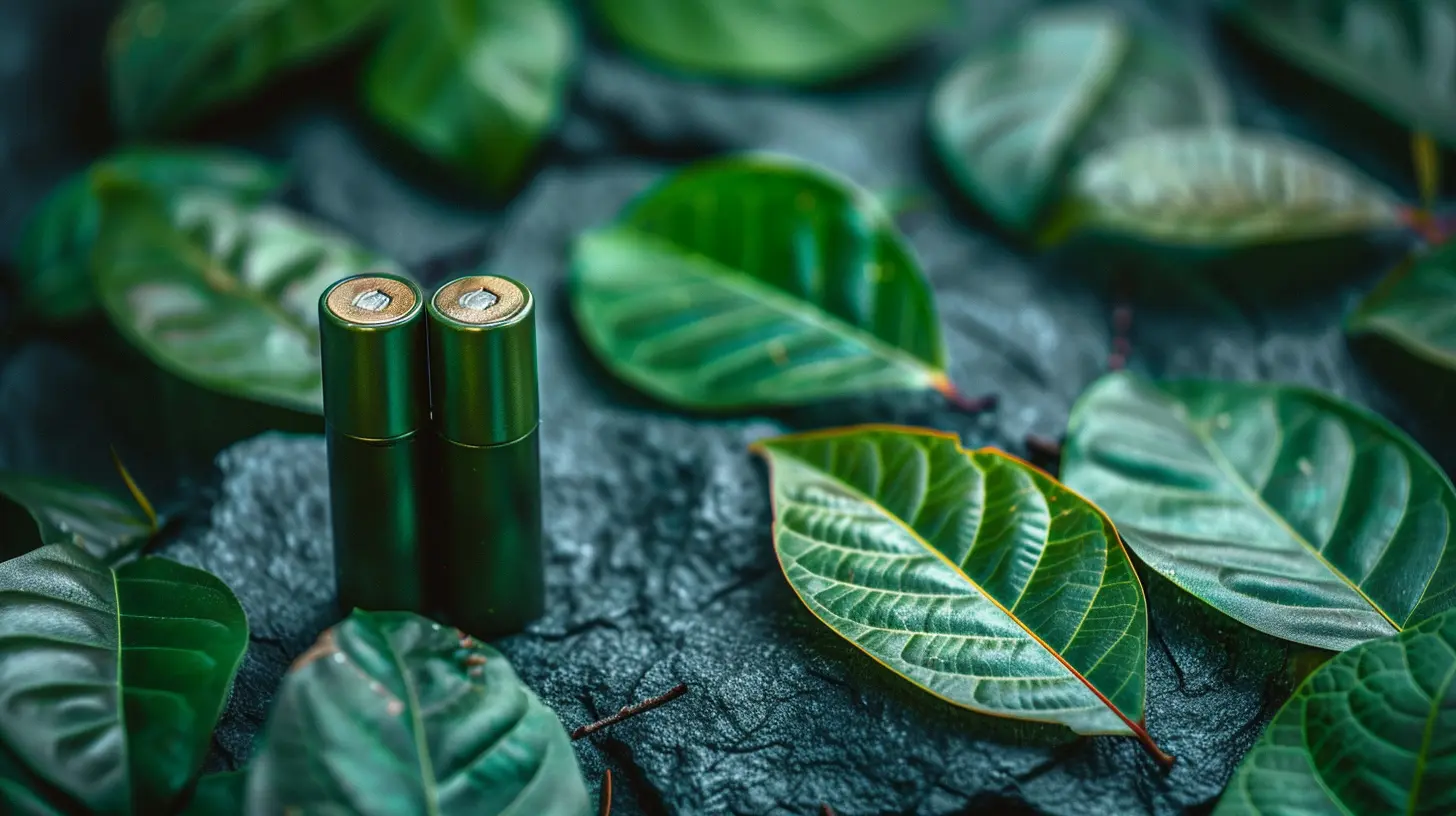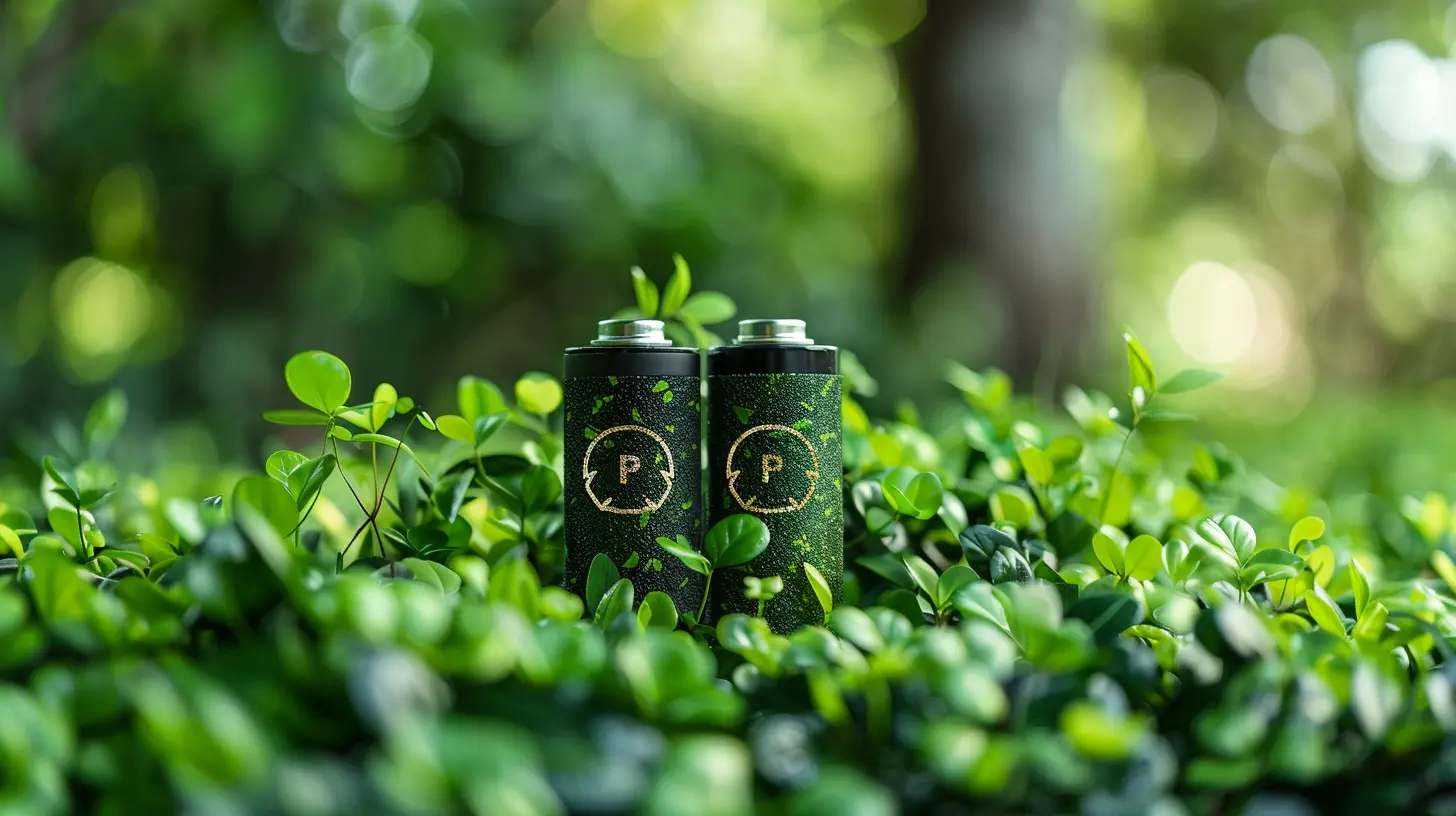Eco-Friendly Batteries: A Greener Tomorrow
26 November 2025
Let’s be honest—we love our tech. From smartphones buzzing every 10 minutes with irrelevant group chat pings to electric cars zipping past like they’re auditioning for a sci-fi film, we're hooked. But all that flashy, modern convenience runs on one pretty important thing: batteries.
And here's the catch—batteries haven’t exactly had the best rep for Mother Earth. Traditional ones are like that messy roommate who never cleans up after themselves. They power up your gadgets, sure, but then they leave behind a toxic mess of chemicals, rare earth metals, and "what the heck is this even?" kind of waste.
So what’s the answer? Drumroll, please... Eco-Friendly Batteries!
These greener power packs are aiming to flip the script. Think of them as the Clark Kent of energy storage—unassuming on the outside but saving the planet in their downtime.
We’re diving deep into the electrifying (pun intended) world of eco-friendly batteries and what they mean for our gadgets, our planet, and our future.
⚡ Let’s Talk About the Battery Problem First
Before we pop the champagne for green batteries, we’ve got to understand why we even need them.The Dark Side of Traditional Batteries
Here’s the dirt: Regular batteries—like the ones in your remote, your car, or that five-year-old phone you’re still clinging to—are made from stuff like lithium, cobalt, and nickel. These aren’t just hard to spell; they’re difficult to mine, environmentally taxing, and super problematic in terms of ethics and sustainability.Mining lithium, for instance, uses an insane amount of water—like, “entire villages running out of drinking water” kind of insane. And cobalt? Don’t even get me started. It often comes from places with shady labor practices that would make any decent person cringe.
Now, when these batteries die, they don’t just quietly disappear into the recycling bin. Nope. They end up in landfills, leaking toxic chemicals into the soil and water. It’s like tossing a mini chemical bomb into the Earth and hoping for the best.
So yeah, eco-friendly batteries aren’t just a good idea—they’re mandatory if we want to keep enjoying our tech without nuking the planet in the process.
🌍 What Exactly Are Eco-Friendly Batteries?
Think of eco-friendly batteries as your tech’s new tree-hugging, planet-loving best friend.The Green Battery Definition (Without the Tech Jargon)
In simple terms, eco-friendly batteries are designed to minimize environmental damage. That means:- Using sustainable or abundant materials,
- Reducing harm during production and disposal,
- Offering longer life spans (less waste!),
- And being recyclable or biodegradable.
It’s like giving your devices a conscience.
🧪 Types of Eco-Friendly Batteries You Should Know (Because Not All Heroes Wear Capes)
So there's no one-size-fits-all here. Eco-friendly batteries come in different flavors. Let’s meet the gang:1. Solid-State Batteries
Imagine the battery version of going sugar-free, gluten-free, and still tasting amazing. Solid-state batteries ditch the toxic liquid electrolytes found in normal lithium-ion packs and replace them with solid ones. That means fewer fires (yes, they catch fire sometimes) and longer lifespans.Bonus: They use less cobalt and nickel, so less damage during mining.
2. Lithium-Iron-Phosphate (LiFePO4) Batteries
Try saying that five times fast.LiFePO4 batteries are like that reliable friend who always shows up. They’re stable, have a long cycle life, and are non-toxic. Also, they don’t use cobalt—major eco points right there.
3. Sodium-Ion Batteries
Sodium as in salt. Yes, the stuff you sprinkle on fries could someday power your phone. These babies are still in development, but they’re promising. Sodium is super abundant, easy to extract, and way more sustainable than lithium.Less rare stuff, less impact on the Earth. Win-win.
4. Flow Batteries
They work like a liquid battery with tanks of electrolytes. They’re big, a bit clunky, but amazing for large-scale things like powering buildings or storing solar energy.Not exactly pocket-friendly… but perfect for eco-smart cities.
5. Bio Batteries
These are still in labs and sci-fi territory, but imagine using organic compounds—like sugar or algae—to generate electricity. That’s some grown-up science fair project goodness right there.It's like composting... but it charges your phone.
🌱 Why Eco-Friendly Batteries are Game-Changers
Okay, let’s get real. The world is moving electric—fast. Cars, homes, phones, lawn mowers... even toothbrushes are plugged into this whole battery thing.Environmental Victories in the Making
By switching to greener batteries, we’re chipping away at:- Greenhouse gas emissions
- Toxic waste build-up
- Exploitative mining practices
- E-waste mountains that look like dystopian art installations
Energy Storage for Renewables
Solar and wind power are awesome, but they’re moody. Sometimes the sun hides, or the wind goes meh. You need solid storage to bank that renewable energy for when you need it.Enter eco-batteries. They’re the missing piece in the clean energy jigsaw puzzle.
🚗 EVs, Meet Your Eco-Battery Soulmate
Electric Vehicles (EVs) are the poster child for climate-friendlier transport. But ironically, their batteries are often riddled with environmental baggage.Enter lithium-iron-phosphate and solid-state batteries. They’re lighter, greener, and safer. Plus, they don’t catch fire when you push your Tesla too hard on a road trip. So, y’know, added bonus?
As EV makers like Tesla, BYD, and Rivian get on board the eco-battery train, we’ll hopefully see EVs that are as kind to the Earth as they are to your wallet on gas savings.
🔄 Recycling: Because Forever Is Too Long
Even the greenest battery will eventually say, “I’m out.” But here’s the twist: Eco-friendly batteries can be recycled more easily—or are already made from recyclable stuff.Companies like Redwood Materials and Li-Cycle are popping up like mushroom farms, specializing in giving old batteries new life.
It’s like reincarnation for your AAA batteries… minus the spiritual awakening.
😎 Challenges? Yeah, They’re Part of the Journey
Let’s not sugarcoat it. Eco batteries are still figuring themselves out.The Price Tag Dilemma
Better materials and sustainable practices cost more. For now. But like with all tech, prices drop fast once demand heats up.Think about how flat-screen TVs used to cost a kidney and now you can buy one at Walmart for less than a fancy dinner.
Supply Chain Hiccups
Sourcing sustainable materials needs global cooperation. No country can solo this mission. It’s like assembling the Avengers—you need everyone on board.Tech Barriers
Battery tech is tricky. You want high energy, long life, fast charging, and low heat—and you want it yesterday. Getting all of that in a green package is a tall order. But researchers are on it. Like, obsessed.🧠 The Future Is Electric... and Green
Eco-friendly batteries aren’t just a fad—they’re the future. As we embrace electric everything, these new-age batteries will be the silent heroes keeping our world running and breathing.What Should You, the Super-Informed Reader, Do?
Glad you asked!- Support brands using sustainable battery tech
- Recycle your old electronics (like, actually do it)
- Stay curious about new green energy trends
- Flex your eco-knowledge in conversations (humble brag encouraged)
Because change doesn’t come from governments alone. It comes from all of us making choices that, over time, add up to a massive difference.
👏 Final Thoughts: It’s Battery-Powered Hope
Eco-friendly batteries feel like science fiction—but they’re very real and very necessary. They’re the underdogs of the sustainability world, quietly transforming how we power life, one eco-charge at a time.So, next time your phone buzzes, your car zooms, or your solar panels silently do their thing—think about what’s powering it. And know that greener solutions are charging up, ready to make tomorrow a little cleaner, quieter, and cooler (in every sense of the word).
all images in this post were generated using AI tools
Category:
Battery TechnologyAuthor:

John Peterson

